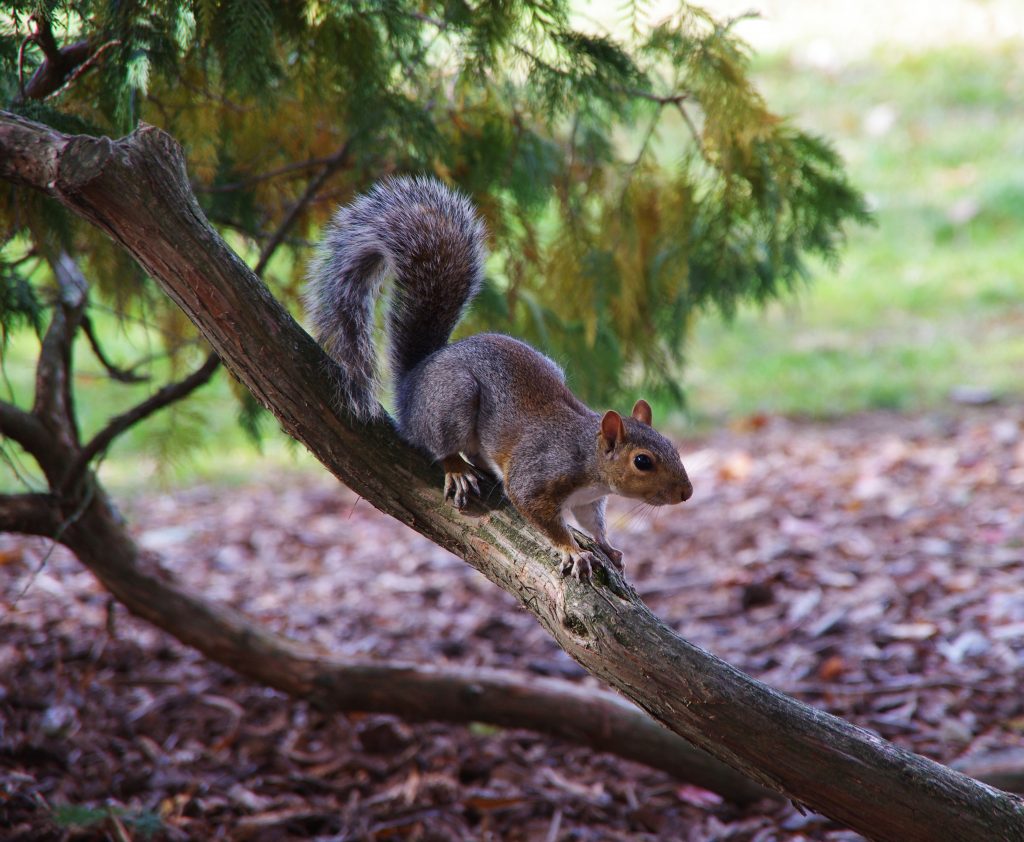Beloved campus squirrels make UMW their home, spark conversation
2 min read
All the tree species on campus produce nuts that squirrels eat and they go nuts for them. (Noah Strobel | The Blue & Gray Press)
By DARCY SPICER
Staff Writer
UMW has a large squirrel population. While some people like them and others find the number of squirrels on campus to be a bad thing, there is no doubt that the university is home to many of these fuzzy creatures. Though there are many questions about this phenomenon, the biggest question may be: why here? Is the presence of so many squirrels unique to UMW?
Andrew Dolby, a biology professor at UMW, provided his professional insight into the squirrel situation. According to Dolby, there are many features of college campuses that benefit squirrels, such as the kinds of trees grown on campus as well as the lack of predators.
“Our campus forest fragments contain tree species such as oaks, hickories, walnuts and beeches, which all produce nuts that squirrels eat. They also give squirrels plenty of cover from predators like hawks [red-shouldered and sometimes red-tailed hawks],” said Dolby. “Throw in a few treats left around on the ground by students, and you pretty much have squirrel heaven.”
“I like the squirrels a lot. They make me happy,” said Ella Green, a sophomore historic preservation major. “I probably see at least ten squirrels a day, but that’s a slow day. I think 20 is probably more reasonable honestly. There’s so many of them.”
She believes the amount of squirrels present is strange, but not necessarily shocking.
“I think it’s something that most people notice about UMW right away, because it’s such a high concentration of squirrels on a relatively small campus,” said Green. “I think the reason is because the campus is so old and has so many mature trees . . . it’s a pretty insular area so honestly we’re probably witnessing like generations of squirrels just in our time here.”
According to Bradley Lamphere, another professor from the biology department, there are certain times of day where one could actually struggle to spot a squirrel. “I tried to do a squirrel feeding lab for my Animal Ecology class last year. Students and I searched campus all lab period [2 – 4:45 p.m.] and came up with zero live squirrels.” said Lamphere. “Apparently, they take an afternoon siesta that is really badly timed for afternoon labs.”
Whether it be by leaving them a snack or snapping a picture, students interact with and appreciate the squirrels. There is even an Instagram account devoted to the squirrels called Squirrels of UMW. The owner of the account said that the squirrels are in fact “very vain” and “love to have their picture taken.”
With winter on the way, there is a significantly larger amount of squirrels scurrying about and looking for food. With all of these furry creatures running about, it makes it hard to not wonder what life is like for these campus squirrels who live seemingly comfortable lives. Although campus squirrels are common, there is no doubt that the squirrels of UMW are highly appreciated and celebrated among the campus community.


